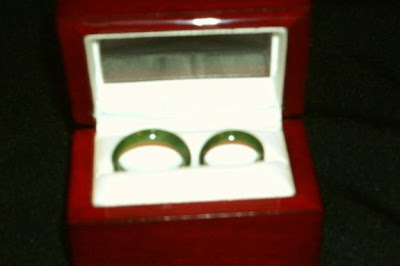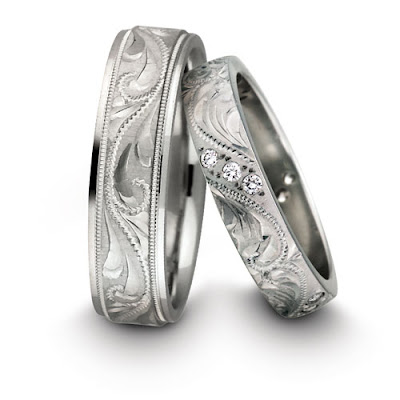Jade is an ornamental stone. The term jade is applied to two different metamorphic rocks that are made up of different silicate minerals:
Nephrite consists of a microcrystaline interlocking fibrous matrix of the calcium, magnesium-iron rich amphibole mineral series tremolite (calcium-magnesium)-ferroactinolite (calcium-magnesium-iron). The middle member of this series with an intermediate composition is called actinolite (the silky fibrous mineral form is one form of asbestos). The higher the iron content the greener the colour.
Jadeite is a sodium- and aluminium-rich pyroxene. The gem form of the mineral is a microcrystaline interlocking crystal matrix.
The English word jade (as well as the English word "jadeite") is derived (via French: l'ejade and Latin: ilia) from the Spanish term piedra de ijada (first recorded in 1565) or "loin stone", from its reputed efficacy in curing ailments of the loins and kidneys. Nephrite is derived from lapis nephriticus, the Latin version of the Spanish piedra de ijada.
Nephrite and jadeite were used from prehistoric periods for hardstone carving. Jadeite has about the same hardness as quartz, while nephrite is somewhat softer. Both nephrite and jadeite are tough, but nephrite is tougher than jadeite. They can be delicately shaped. Thus it was not until the 19th century that a French mineralogist determined that "jade" was in fact two different materials. The trade name jadite is sometimes applied to translucent or opaque green glass.
Among the earliest known jade artifacts excavated from prehistoric sites are simple ornaments with bead, button, and tubular shapes.Additionally, jade was used for axe heads, knives, and other weapons. As metal-working technologies became available, the beauty of jade made it valuable for ornaments and decorative objects. Jadeite measures between 6.5 and 7.0 Mohs hardness, and Nephrite between 5.5 and 6.0, so it can be worked with quartz or garnet sand, and polished with bamboo or even ground jade.
Nephrite can be found in a creamy white form (known in China as "mutton fat" jade) as well as in a variety of green colours, whereas jadeite shows more colour variations, including blue, lavender-mauve, pink, and emerald-green colours. Of the two, jadeite is rarer, documented in fewer than 12 places worldwide. Translucent emerald-green jadeite is the most prized variety, both today and historically. As "quetzal" jade, bright green jadeite from Guatemala was treasured by Mesoamerican cultures, and as "kingfisher" jade, vivid green rocks from Burma became the preferred stone of post-1800 Chinese imperial scholars and rulers. Burma (Myanmar) and Guatemala are the principal sources of modern gem jadeite, and Canada of modern lapidary nephrite. Nephrite jade was used mostly in pre-1800 China as well as in New Zealand, the Pacific Coast and Atlantic Coasts of North America, Neolithic Europe, and south-east Asia. In addition to Mesoamerica, jadeite was used by Neolithic Japanese and European cultures.











1 comments:
Thanks for sharing this post. Nice gold engagement rings, check out ours.
Post a Comment